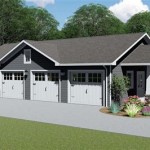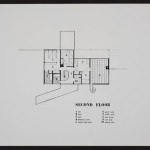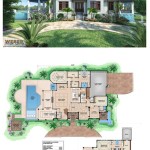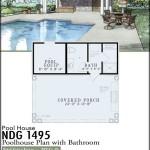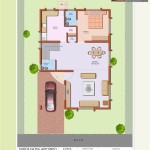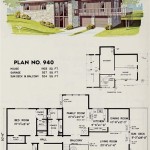Essential Aspects of House Building Ground Floor Plan
The ground floor plan of a house is a crucial element in the overall design and functionality of the home. It serves as a foundation for the layout of the main living spaces, such as the living room, dining room, kitchen, and bedrooms. When creating a ground floor plan, there are several key aspects to consider.
1. Functionality and Flow: The ground floor plan should prioritize functionality and ensure a smooth flow of movement between different spaces. The placement of rooms and doorways should allow for easy navigation and transitions. Open-concept designs can promote a sense of spaciousness and connectivity, while well-defined room divisions can provide privacy and separation.
2. Natural Light and Ventilation: Ample natural light and proper ventilation are essential for a healthy and comfortable living environment. The ground floor plan should incorporate windows and doors to allow for natural light and fresh air to circulate throughout the rooms. Consider the orientation of the house to maximize sunlight during different times of the day.
3. Room Sizes and Proportions: The size and proportions of each room should be carefully considered based on its intended use and the overall layout of the house. The living room should be spacious enough to accommodate furniture and provide a comfortable seating area. Bedrooms should be large enough to fit a bed, dresser, and other necessary pieces.
4. Kitchen Layout: The kitchen is a central space in the home, and its layout should be designed for efficiency and convenience. Consider the placement of appliances, countertops, and storage to create a functional and ergonomic workspace. The kitchen should also be easily accessible from the dining area and other main living spaces.
5. Storage Solutions: Adequate storage is essential for keeping the house organized and clutter-free. The ground floor plan should include closets, pantries, and other storage areas throughout the house. Consider built-in storage to maximize space and create a cohesive look.
6. Accessibility: Accessibility is an important factor to consider, especially if there are elderly or disabled residents in the household. The ground floor plan should provide easy access to all essential areas of the house, including the bedrooms, bathrooms, and kitchen.
7. Outdoor Spaces: The ground floor plan should also incorporate outdoor spaces, such as a patio, deck, or yard. These spaces can extend the living area and provide a connection to nature. The placement and size of outdoor spaces should be carefully considered based on the size of the property and the desired level of privacy.
Creating a well-designed ground floor plan is essential for achieving a comfortable, functional, and aesthetically pleasing home. By considering these essential aspects, homeowners can ensure that their ground floor layout meets their specific needs and creates a living space that they will enjoy for years to come.

Typical Floor Plan Small Apartment Building Residential

Ground Floor Plans For The Domestic Building Built Area Is 381 M 2 Scientific Diagram

48 X 38 Ground Floor Plan Of House Building Design Dwg File Cadbull

Three Y Building Ground Floor Plan Plans Apartment Layout

Design Of The Residential Building Tubular House A Ground Floor Scientific Diagram

Building Plan Ground Floor A And Second B Sensor Placement Scientific Diagram

Housing Building Structure Detail Plan Elevation And Section 2d View Dwg File Detai One Floor House Plans 2bhk Residential

G 2 Tiny House Plan Design And Designs Books

House Plan 45 X 40 Best North Facing Building

G 2 House Plan 3bhk With 3d Elevation Design Housepointer

